Business

5 min

Let’s explore how augmented reality is reshaping accounting apps—from static spreadsheets to immersive, interactive experiences. This blog dives into real-world use cases, UX benefits, and how fintech teams can build smarter, user-first financial tools with AR.

By Dhruv Joshi
01 Jul, 2025
Accounting apps aren’t exactly fun to use, are they? Sometimes, all we see are multiple rows of spreadsheets, static dashboards, and buttons buried behind the menus. We’ve all been there. But here’s the thing: in a world where user experience is everything, even financial tools are starting to evolve. Now picture this: what if instead of looking at dense tables or jumping between tabs, you could point your phone at a receipt and instantly see a visual breakdown of spending categories, tax implications, or flagged risks? Or better, what if you could walk through a 3D projection of your company’s cash flow trends right on your desk?
That’s not far-fetched. That’s augmented reality in accounting.
While AR continues to bring revolutionary changes in industries like retail, gaming, and real estate, it can make an unimaginable world of difference in the finance field, especially accounting. And that’s exactly what makes it so exciting. In an industry where clarity, precision, and insight matter most, use of augmented reality in accounting can turn static numbers into interactive visual experiences. In this blog, we’ll explore how AR can enhance accounting apps, make financial data more accessible, and help both professionals and clients interact with numbers in smarter, more futuristic ways. We’ll break down real-world use cases, the advantages, and how your team can start building financial tools, with the help of a custom mobile app development company, that feel less like spreadsheets and more like future-ready assistants.
Most accounting software are now starting to feel like they were built for a world where everyone printed their spreadsheets. Although it has become more functional with time, its essence has not gone as far as becoming current and up-to-date with how users have come to enjoy dealing with information and data. We are in the age of touchscreen, voice control, and swiping. Young working adults, entrepreneurs, and professionals are used to apps that work quickly and easily along with a bit of fun. They do not want to crack graphs or explain mysterious line entries when they touch on a finance app. Instead, they want instant clarity. Here are some factors behind this need for change:
What would happen when we bring AR into the world of pages, invoices, and cash flow charts?
Interestingly, a lot can happen. Augmented reality accounting’s strength lies in making abstract data feel understandable and interactive, which is exactly what traditional accounting tools have a hard time dealing with. By layering visual context onto real-world elements, augmented reality in accounting can simplify complexity, boost comprehension, and even reduce errors.
Here’s how the use of augmented reality in accounting can enhance accounting workflows:
What if you could open your financial app and project a 3D model of your company’s revenue, expenses, and profit trends onto your desk? You would be able to rotate it, zoom into specific quarters, or tap on a spike to see what caused it. AR turns static graphs into interactive environments, helping users spot trends and patterns faster. Besides, it’s quite fun to do so.
Rather than uploading data on a paper bill or even PDF file, a user is able to hold a phone up to the document and see real time overlays like the expense category, tax code, approval status or any anomaly the system is showing. This will make your work faster and eliminate guesswork, particularly in cases where users are not trained accountants.
With AR, you can build scenario-based simulations. For example, what happens to your cash position if a payment is delayed? Or if you onboard three new clients next quarter? Visualizing financial forecasts in a spatial, hands-on format can make planning more collaborative and less like a trouble that cannot go away.
Augmented reality in business and accounting can also be used to educate users like those who are new business owners or junior staff. Picture an AR tutorial guiding someone through the basics of balance sheets, tax categories, or compliance steps, triggered by scanning key areas of the app or a physical workspace.
Scanning receipts isn’t exactly new but AR can go a step above and make it even smarter. Instead of just clicking a photo, augmented reality and virtual reality in accounting could auto-tag line items, apply GL codes, and match entries to past records. All of this would happen while showing live visual cues on the screen.
There’s nothing about simple spreadsheets that could actually get someone excited, and the same goes for other tasks in financial apps. That’s one of the biggest pain points in most accounting tools: they’re functional, but not very user-friendly. In fact, some users just straight up don’t like them. Augmented reality in accounting offers a fresh way to tackle this issue. Instead of presenting data in tables or menus, AR showcases financial information directly into the user’s world. As a result, it’s easier to see, understand, and act on. This isn’t just cool tech for the sake of it. Here’s why it matters:
It’s quite clear that AR is flashy, but businesses will not invest in something which gives them no value. So, the real question is, does AR actually provide better results for your product and your users? And the answer, unsurprisingly, is a profound yes.

A well-utilized AR can transform your financial application into a long-remembered experience. It helps lower churn in users, increase time duration in the app, and customer satisfaction, particularly in apps that target small businesses, startups, or finance teams attempting to work together on the fly. User confidence is also something where it thrives. People feel more in control when they can clearly see where their money is going and what their financial future might look like. This leads to fewer errors, faster decisions, and ultimately, more trust in the app itself. From a business perspective, AR can help:
Increase engagement and retention by making routine tasks more interactive and rewarding
Position your app as an innovator, setting it apart in a crowded fintech landscape and avoiding fintech security challenges
Improve onboarding and training by making financial literacy more approachable
Encourage word-of-mouth marketing through shareable, unique experiences
Justify premium pricing or feature upgrades by offering differentiated, value-added tools
Okay, let’s assume that you are sold on AR’s potential. But, now you might be thinking: what does it actually take to bring it into a financial product? The good news is, you don’t need a Hollywood VFX budget to get started. But you do need to be smart about how you build, what tools you use, and how tightly AR integrates with your core financial workflows. The first decision is choosing the right AR platform. For most financial apps, this comes down to three main options:
You’ll also want to consider data privacy and compliance, more so if your app deals with sensitive financial documents or user behavior. Augmented reality on accounting may require access to a user’s camera or document storage, so it’s important to be transparent, secure, and GDPR/CCPA-compliant from day one.
Integration is another big piece of the puzzle. AR shouldn’t sit on the sidelines as a separate layer. It should plug directly into your app’s financial logic and APIs. Whether it’s real-time data from QuickBooks, a custom ledger engine, or an expense categorization tool, your AR feature needs to pull from and feed into the same backend ecosystem.
At Quokka Labs, we offer augmented reality accounting consulting and we always recommend a prototyping-first approach. Through our AR development services, you can start with a simple MVP: one AR use case, one workflow, one key user pain point. From there, test, gather feedback, and refine. It’s the best way to balance innovation with stability in a field like finance where accuracy and trust matter more than flash.
Building AR features into accounting or financial apps attracts some unprecedented challenges. But fortunately enough, most of these hurdles are totally manageable with the right planning and product mindset. One of the first things to watch out for is the learning curve. Objectively finance is already intimidating for many users. While augmented reality in business and accounting is meant to make things simpler, if it’s not implemented thoughtfully, it can feel like an extra layer of complexity. The key here is to introduce AR gradually, with clear cues and onboarding moments that make the experience feel helpful and not overwhelming Another problem is avoiding visual clutter. It’s easy to go overboard with 3D charts, floating elements, or animations. But too much on-screen movement or data in one space can make users feel lost. Thus, you only need to show what’s necessary in the moment. There are also technical and business considerations to factor in:
Device compatibility: Not all users have high-end phones. Make sure your AR features degrade gracefully or offer alternatives.
Data security & privacy: In finance, this is non-negotiable. AR features that use the camera or scan documents must follow strict compliance protocols.
Integration complexity: Your AR layer needs to work with real-time financial data, so syncing with your app’s backend logic is critical.
Internal adoption: If your app serves finance teams or enterprises, even employees may need time to adapt. Plan for training or in-app walkthroughs.
It’s quite evident that augmented reality isn’t just a futuristic toy or a marketing gimmick. What we have in front of our eyes is a practical and powerful tool that can make financial apps smarter, more user-friendly, and a lot more engaging. In an industry where clarity and trust are everything, augmented reality accounting consulting opportunities can help users interact with numbers in ways that are visual, intuitive, and, obviously, enjoyable.
From turning dense financial data into interactive 3D models, to simplifying expense tracking with real-time overlays, augmented reality in accounting has the potential to make accounting apps feel less like work and more like insight-on-demand. And the best part is that you need not build a full-blown metaverse to get started. With the right use case, a solid product team, and a thoughtful approach, even a simple AR feature can create real business value.
At Quokka Labs, we help forward-thinking brands design and build digital experiences using AR development services that are as intelligent as they are intuitive. Let’s connect and explore what AR could look like in your next-gen fintech solution.
Top 11 Must-Have Features of a Custom Web Application in 2026
By Dhruv Joshi
5 min read
Generative AI Tech Stacks: Choosing the Right Tools for Scalable AI Development
By Dhruv Joshi
5 min read
Choosing Best Tech Stack for Web App Development: Performance, Cost, and Scalability
By Dhruv Joshi
5 min read
Top 9 Tech Stacks for Scalable Web Application Development
By Dhruv Joshi
5 min read

Business

5 min
Plan hr software development the practical way: must-have HRMS features, event-driven architecture, integrations, security controls, and a clear build roadmap. Use cost ranges, effort tables, and partner checklists to choose reliable hr software development companies. See persona-based workflows, a build-vs-buy matrix, and budget levers to launch an HRMS that reduces errors, speeds onboarding, and delivers audit-ready analytics.


Business

5 min
Learn how pharmacy management software development streamlines dispensing, inventory, billing, and patient engagement. This comprehensive guide covers software types, core modules, tech stack, step-by-step process, must-have 2026 features, costs, and tips for hospitals and independent pharmacies. Build secure, interoperable, cloud-ready pharmacy management software that reduces errors and improves care outcomes.


Business

5 min
Telemedicine app development is transforming healthcare by enabling secure, remote care through video, chat, and monitoring tools. Telemedicine apps support urgent care, chronic management, and mental health, while key features include e-prescriptions, EHR integration, and secure payments. Choosing the right telemedicine app development services partner requires proven healthcare expertise, HIPAA/GDPR compliance, scalable cloud architecture, transparent pricing, and strong post-launch support.


Feeling lost!! Book a slot and get answers to all your industry-relevant doubts